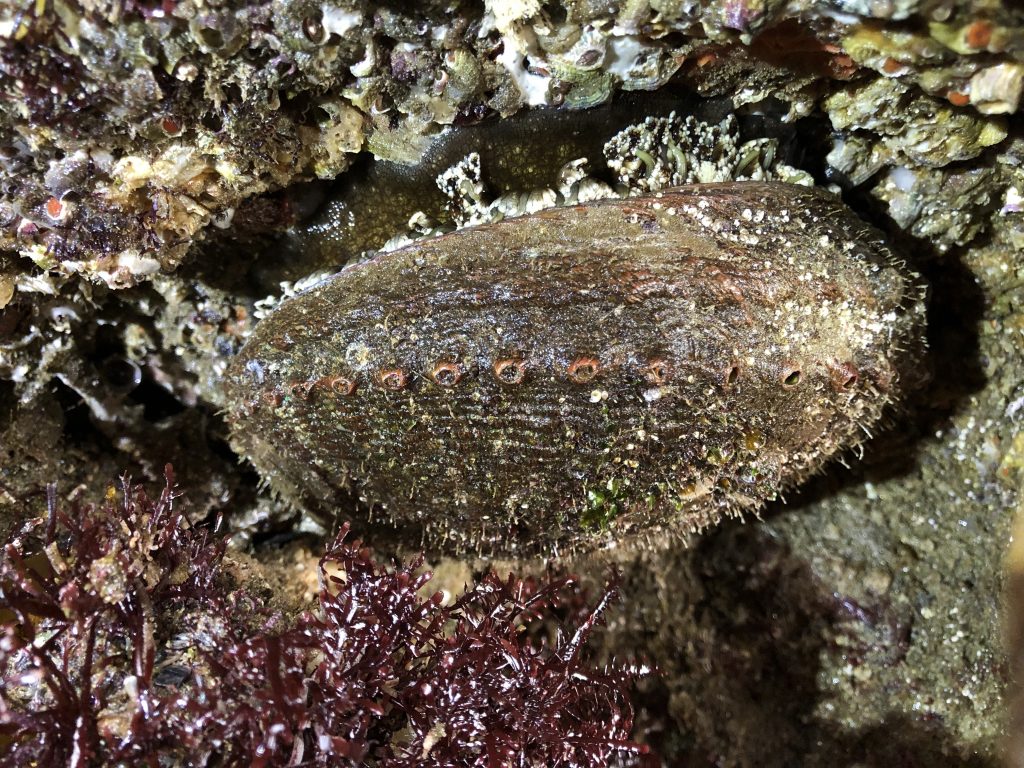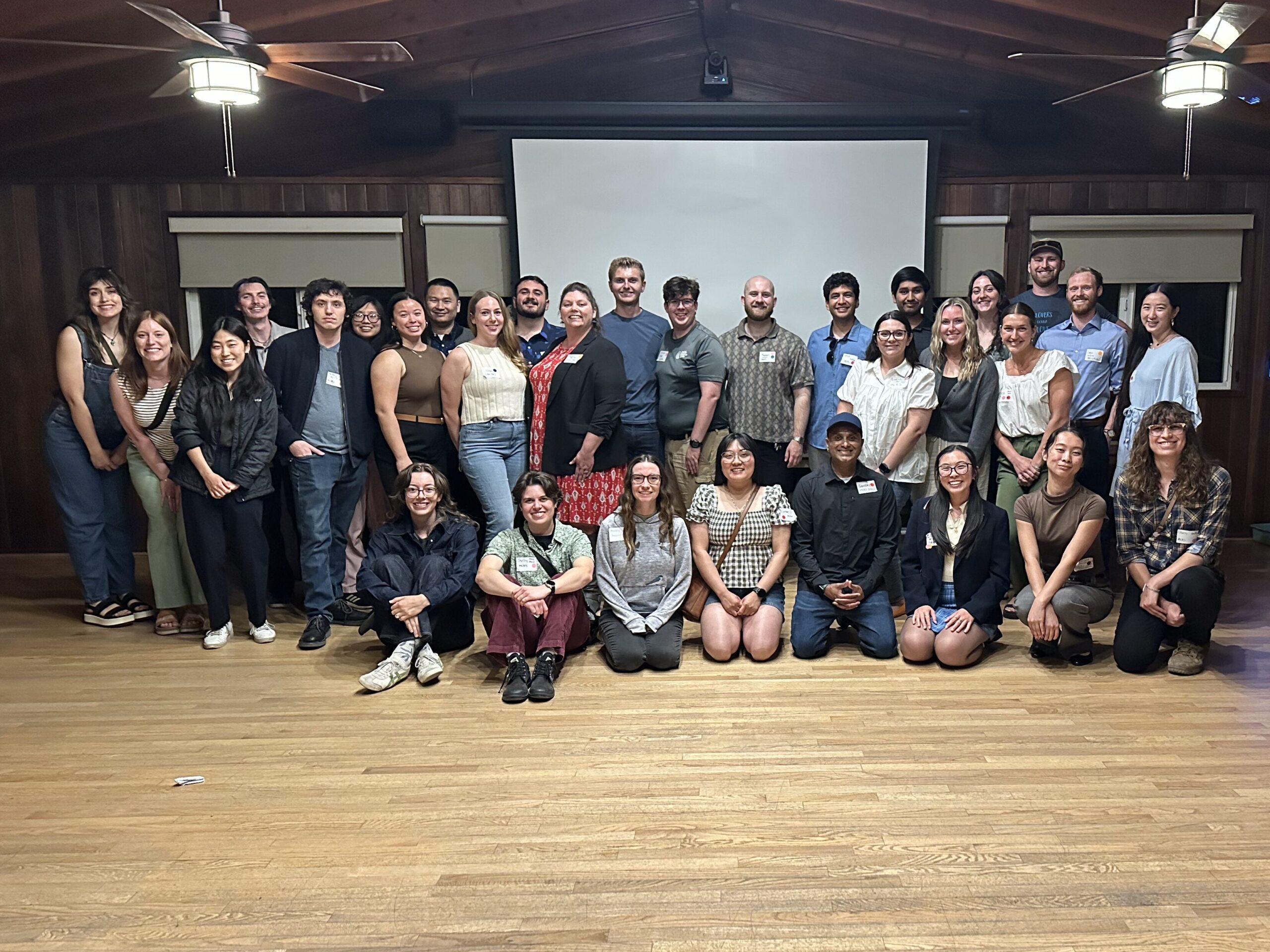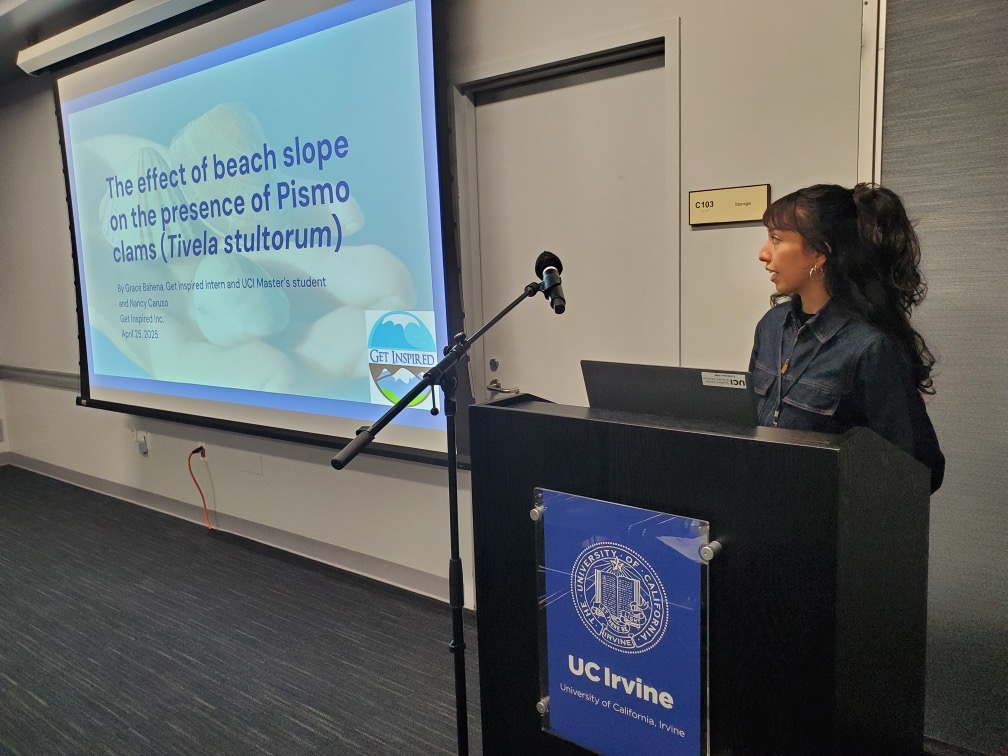Student Blog: Kelcey Chung
Kelcey Chung is a 2nd year MCRS student. Her goal is to promote the sustainable utilization of our major natural resources, such as land, water, air, forests, fisheries, and wild flora and fauna as she believes that these resources not only provide essential ecosystem services, but also a better quality to human life.

Have you ever been to the beach when the tide goes out? There’s so much more beneath the surface of the ocean than you may think. When the tide is high, all you see is the vast blue sea, but as the tide moves out, a whole new world is exposed along the rocky shoreline. Scientists, like me, call this world the intertidal zone, but most people know it as the tide pools. At first glance, it may look like there’s not much there, but as you get closer, you realize that there’s so much more life to be explored, more than just your average hermit crab. You come face-to-face with fish, sea urchins, sea stars, barnacles, limpets, sea anemones, and sometimes, if you’re really lucky, you’ll encounter the rarest of them all, an abalone.
It was a warm winter day in southern California—the sun was out, the breeze was cool, and the tide was incredibly low at Shaw’s Cove in Laguna Beach. I’m a sucker for hanging out in the intertidal during low tide. I love exploring the rocky shoreline, especially when I can squeeze myself into cracks and crevices that can only fit maybe a small child (not for the claustrophobic type). I find these spaces the most fascinating because, when you slip in, it’s as if you become the animal that lives in these dark places, spending half their life in the water and half their life out of the water. It’s a change of perspective that will never get old. But on this day, I wasn’t there to frolic in the waves and explore the tide pools. That day, I was there for one specific purpose and one purpose only…to find a black abalone.
People who know me know that I normally don’t plan my day out at the tide pools—spending all my time looking for one species in particular. Normally, I enjoy looking at the diversity of animals that inhabit this magnificent place and watching their daily interactions. But this day was different. I was at the tide pools specifically to find black abalone because this specific animal is the star of my capstone project. If you were to remove black abalone from my project, there would be no project.
My capstone project revolves around assessing black abalone populations and their habitat along the Orange County coast, so looking for black abalone at Shaw’s Cove in Laguna Beach achieves just that. Why am I doing this, you ask? Well, first, the black abalone population in Orange County is unclear—we don’t know how many individuals are actually present, alive, and well. And second, the black abalone is listed as endangered (Neuman et al., 2010). So, to protect this species from extinction, we need to go out and learn more about them!
Black abalone, Haliotis cracherodii, are marine gastropod molluscs, meaning that they are sea snails! They have a blackish-blue oval-shaped shell, a large muscular foot that allows them to hold onto rocks, a head with cephalic tentacles and eyes, epipodial (a lateral ridge along either side of the foot) tissue that surrounds the shell, and holes called respiratory pores that run along the top of the shell, allowing them to reproduce, eliminate waste, and breathe (NOAA, 2020). These respiratory pores, along with their size and shell color and shape, are important structures for species identification as these features vary depending on the species of abalone.
There are seven species of abalone in California—pinto, white, pink, red, green, flat, and black abalone. Of the seven species, two species, white and black abalone, are listed as endangered (Neuman et al., 2010). Black abalone often inhabit the intertidal zone under boulders or in cracks and crevices as these areas provide shelter and protection for the animal, but they occasionally can be found out in the open on flat areas of the reef (Raimondi et al., 2012). Although we know what kind of habitat black abalone prefer, there is not much known about the number of black abalone that call the Orange County coast their home. So, it is my job to see if there are any living along our coastline, and if there are, how many are present.
So, I began my quest to find black abalone. I took my flashlight and looked under rocks, around rocks, between rocks, and in cracks and crevices, and came up empty. I even stuck my hand in the mysterious unknown of hard to reach places to feel around, hoping to stumble upon an abalone. No luck. So why are they so difficult to find?
First, they blend in well with their environment; they look like a rock and live in rocky habitat. It’s basically like looking for a needle in a haystack—if you’re not looking carefully, you could easily miss one or mistake it for another ordinary rock. Second, black abalone are considered locally extinct in southern California. A long time ago, black abalone were commonly found from Crescent City, California to southern Baja California (Neuman et al., 2010). However, due to overfishing and disease, black abalone populations declined rapidly and soon became a rare sight (Eckdahl, 2015). Populations along the Orange County coast have yet to recover, but there is some hope that there are a few individuals out there that have made our coast their home.
I continued to search Shaw’s Cove meticulously, ensuring that there was no rock left unturned. I double-checked the underside of each boulder and looked in each crack and crevice multiple times at different angles to ensure I covered every part of the rocky surface area. Still nothing. At this point, the sun was going down, I had been searching for almost three hours, and I was about ready to call it a day.
In the distance, I could vaguely see a gap between two large pieces of bedrock and decided to make that my last search of the day. I sluggishly walked over with my flashlight in hand, and to my surprise, this gap was deep, dark, and huge, almost like a narrow cave—the perfect abalone habitat! With high hopes, I quickly hopped into the dark space, turned on my flashlight, and started walking the length while keeping my eyes peeled for abalone. I walked slowly and looked carefully to ensure that there was no way I was going to miss an abalone. As I approached the near end of the cave-like structure, the tide had left a shallow pool filled with small boulders and feather boa kelp. I knelt down on a boulder, pushed the feather boa kelp away, and shined my flashlight in a tight space between the side of the cave and another boulder.
Suddenly, my eyes lit up like it was Christmas morning. Was this real? Was I dreaming (I had been in the sun for a long time)? Was this what I thought it was? It indeed was; an adult abalone, nestled in a crack on the side of the cave wall minding its own business. My entire body filled with excitement and a huge smile took over my face from ear to ear. Had I found what I was looking for? The rare black abalone?! I shined my light a little closer to get a better look at the texture of the shell and the number of respiratory pores. Black abalone tend to have five to nine distinct respiratory pores, so I began counting. One, two, three, four, five, six, seven…seven respiratory pores. It could be a black abalone! Then I looked at the coloring and texture of the shell. It was a brownish color with many low, slightly elevated ribs. It reminded me of corduroy. Black abalone have a smooth blackish-blue shell, which led me to believe that this was not a black abalone. Based on the number of respiratory pores and the coloring of the shell, I decided that the species I had found was actually a green abalone, Haliotis fulgens (California Department of Fish and Wildlife, 2020).
Slightly discouraged, but still full of excitement, I took a measurement with my ruler, wrote down the GPS coordinates, snapped a few pictures, moved the kelp back the way I had found it, and climbed out of the cave. I found an abalone! Maybe not the species I was hoping for, but still an abalone, nonetheless. At least I knew I was doing something right since I was able to find one. There’s hope! Still giddy and stoked on life about the abalone, I packed up my belongings and began my trek back to reality.
Until next time black abalone, I’m determined to find you. Someday, we will meet…at low tide.
California Department of Fish and Wildlife. (2020). Abalone Identification Guide. https://wildlife.ca.gov/Conservation/Marine/Invertebrates/Abalone/Abalone-ID
Eckdahl, K. (2015). Endangered black abalone (Haliotis cracherodii) abundance and habitat availability in Southern California. Master’s Thesis, California State University, Fullerton.
National Oceanic and Atmospheric Administration. (2020). Black Abalone. https://www.fisheries.noaa.gov/species/black-abalone#overview
Neuman, M., Tissot, B., & Vanblaricom, G. (2010). Overall status and treats assessment of black abalone (Haliotis cracherodii Leach, 1814) populations in California. Journal of Shellfish Research, 29(3), 577-586.
Raimondi, P., Orr, D., Fletcher, N., Fedfield, M., Lohse, D., Miner, M., George, M., Gaddam, R., Engle, J., Lee, Steven, & Witaker, S. (2012). Haliotis cracherodii, on San Clemente Island.




